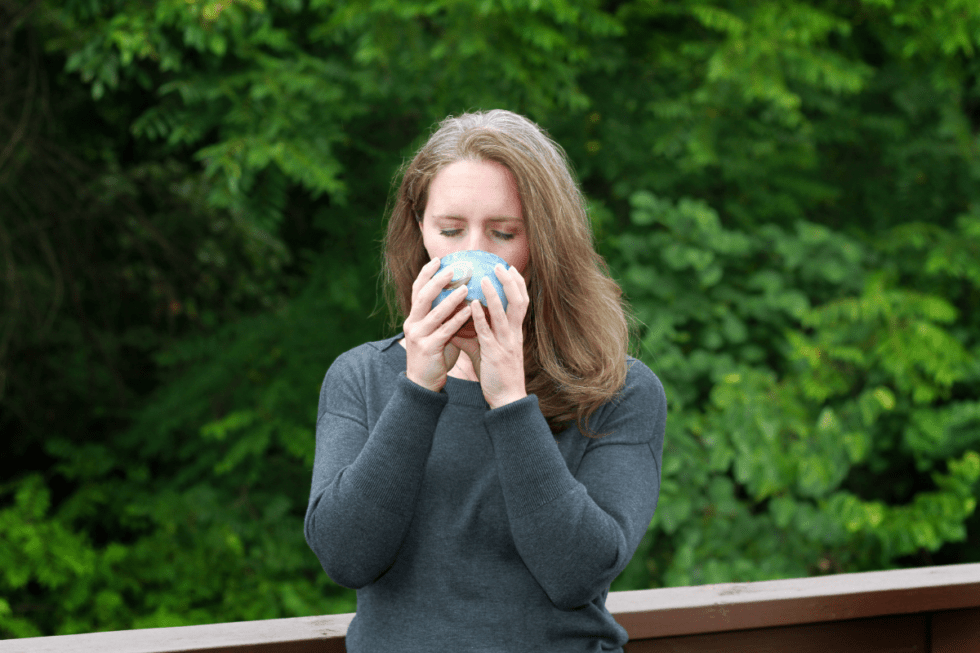
Tulsi Rose Low Histamine Tea Recipe (also Low Oxalate, Low Lectin, Low FODMAP)
Could low histamine tea like tulsi rose tea help soothe your nervous system and mast cells?
Have you have dealt with any of the following?
- Mold Toxicity
- Surgery
- Chronic stress
- Lack of support
- Trauma (emotional, physical, or medical)
If so, your nervous system may have gone haywire. And that could be contributing to your MCAS symptoms.
Those of us with Mast Cell Activation Syndrome and Histamine Intolerance need lots of calming supports. Calming the nervous system is one of the first steps of the MC360™ Method.
Nervous system work has been the missing piece that has helped so many Mast Cell 360 clients start to get their health back.
And a quick and easy way to help calm your nervous system is to simply relax by drinking tea.
I’ve put together a recipe using tulsi tea which is tasty and soothing.
Additionally, this tea recipe is:
- Low Histamine
- Low Oxalate
- Low Lectin
- Low FODMAP
- Gluten Free
- Dairy Free
- Caffeine Free
Before you get to the recipe, read more on why calming the nervous system is an essential step in supporting mast cells.
How Low Histamine Tea Can Help Support Your Nervous System
Nervous system dysregulation is one of the key issues that cause an increase in mast cell issues and histamine levels.
When you have experienced mold, chronic stress, lack of support, major surgery and/or trauma, you can get stuck in a nervous system dysregulation loop.
Your body and mind get used to being in a chronic stress loop. And they don’t know how to step out of it. It’s like you are continually running on a hamster wheel!
Calming the stress response in your body is key to your wellness.
Have you experienced any of these symptoms of Histamine Intolerance?
- Food allergies and intolerances
- Hives
- Migraines
- Digestive issues like IBS
Managing stress may help with these types of symptoms by calming the mast cells.
When mast cells are triggered, they release histamine.
So, calming the mast cells can help lower your histamine levels.
And you’ll likely see a decrease in allergic reaction symptoms.
It’s important to give your body nourishing nervous system support every day.
One way to do this is drinking a supportive low histamine tea like tulsi tea. You may have also heard tulsi referred to as Holy Basil. You’ll read more about the benefits of tulsi further down in the post.
Drinking tea is one of the most enjoyable and easy ways you can support your nervous system.
All you really need to do is steep herbs and/or tea leaves into hot water.
But you can do so much more with tea to give yourself some variety.
The tulsi rose tea recipe you’ll read about shortly is so easy and enjoyable to make!
Even the meditative practice of making this tea can be part of your nervous system support routine.
You can also support your nervous system in different ways like:
- Connecting with a friend
- Taking a walk like forest bathing
- Getting extra sleep
- Doing a breathing exercise like resonant breathing
- Practicing a nervous system support program like Gupta
- Checking out my Nervous System Reboot Course
Both my clients and I have seen so many benefits from engaging in these pleasurable ways to support the nervous system.
Drinking low histamine tea is one of the easiest ways you can get started.
You don’t want high histamine tea negating your nervous system support.
When it comes to tea, there are a few tips you should know if you have Histamine Intolerance or MCAS.
Let’s look more at that next.
Before you change your diet on your own, please make sure you’re working with a healthcare practitioner who can help you with this. Never limit foods unnecessarily, and always have a licensed medical provider who is supervising your case.
High Histamine Teas
I’ve had a lot of questions about tea. Teas are marketed as health foods! And many do have a lot of health benefits.
But you need to be cautious about some types of tea if you have Histamine Intolerance or Mast Cell Activation Syndrome.
Here’s what can make these teas affect your histamine levels:
- Black, green, white tea – these teas all come from the same “tea” plant, inhibit DAO, and are also high oxalate
- Rooibos – fermented and high histamine
- Chai – cinnamon, clove, nutmeg in chai are histamine liberators, and chai also traditionally also contains black tea
These all affect the amount of histamine in your body.
Related Post: High Histamine Foods List
Another issue you may run into is that some teas may be fermented. This makes them last longer on the shelf. This won’t be labeled though. You have to call companies to ask about their practices.
The other consideration is caffeine.
Many of our clients who are hypersensitive struggle with caffeine. And most decafs use a toxic chemical process that may spark mast cells.
Some people who are less sensitive or further along in their health journey may be able to enjoy those types of teas in moderation from time to time. Especially if they are taking a histamine blocker or a support like diamine oxidase (DAO enzyme).
But if you’ve had trouble with tea, here’s how to find and make tea that is less likely to spark your mast cells or histamine release.
Sourcing Low Histamine Tea
Plucking plant leaves from your own garden and immediately steeping them will give you the freshest, lowest histamine tea.
This isn’t realistic for everyone, though. I grew it in my garden for years to drink it fresh, but it’s very weedy and takes over. It needs to be contained like mint.
I’ve tried different dried teas in the past.
But here are the problems you can run into with dried tea.
For starters, the taste isn’t as good. I’ve tried some with such weak flavor, I felt like I was just drinking hot water.
And others I’ve tried have had a bitter aftertaste.
But even more than that, here’s what to think about when selecting dried teas.
Herbal teas in most stores may be sitting on the shelf for months or even years! This means it is growing in histamine content.
And old, dried herbs don’t have the same potency as fresh herbs. That means you aren’t getting all the same benefits for your health.
But there are some good options out there!
For years, I’ve been drinking Kauai Farmacy teas. They have amazing herbs including organic tulsi! Their herbs are vibrant with freshness and color.
And their flavor is so much better and brighter!
>>>Use Coupon Code MASTCELL360 for 15% off Low Histamine Teas
The Tulsi Tea is at the top of the page. But you’ll see other mast cell friendly products as well. I specially curated these for you. Many are non-GMO and certified organic teas, like the peppermint tulsi.
My next choice for low histamine tea is Buddha Teas.
My favorite products by them are their CBD teas.
If you don’t have Salicylate Intolerance you might enjoy their CBD Chamomile tea.
When you know what you like and once you have emptied some of your histamine bucket, you may be able to tolerate dried loose leaf teas from Starwest Botanicals.
Starwest may not be as fresh as Kauai Farmacy. But they have a nice variety of high quality, organic options.
These are great to buy loose leaf tea and herbs in bulk. And if Kauai Farmacy is out, you may be able to use Starwest Botanicals Tulsi Tea instead.
Some of the other options from Starwest Botanicals that I rotate are:
You can keep the Cardamom Pods from Starwest Botanicals on hand if you have trouble finding them fresh when they are out of season.
I like drinking very simple cups of tea most days.
TIP: If you don’t like the taste of an herb, don’t let it go to waste! You can use it in a hot bath. One client shared with me that she didn’t like the taste of lavender tea so she put it in a strainer and soaked in the bath with it. With any new ingredient, try a very small amount to start.
But sometimes, I want a fancy, specialty drink.
So, here’s one way I like to take my tea to the next level.
Low Histamine Tea Ingredients
This low histamine tea recipe has tulsi, cardamom, ginger, and rose flavor.
All of these herbs are supportive to the rest and digest side of the nervous system (the parasympathetic). It is stress relieving!
When your nervous system is in the hyperalert state (the sympathetic), your immune system also takes a hit.
When you drink soothing, low histamine tea, you are supporting your nervous system. And by supporting your nervous system, you are supporting your immune system.
Remember, you can pick and choose your favorite herbs from my low histamine foods list to customize this to your preferences. One day, you might be craving chamomile and can mix that in. The possibilities are endless!
Let’s look at how these low histamine tea ingredients can support your body.
Tulsi
Tulsi, also called holy basil, is a type of adaptogen.
Adaptogens can help support your nervous system. They help your body be more resilient to stressors, whether that’s physical, mental, emotional, or biochemical stress.
Related post: Nervines and Adaptogens: Boosting Resiliency
Tulsi has been traditionally used in Ayurvedic medicine.
In fact, it’s nicknamed the “queen of herbs.” Once you taste this tulsi sweet rose tea, I think you’ll agree.
More than that, tulsi tea has histamine lowering properties.
Studies show that it has antihistamine and antianaphylactic properties.
In fact, tulsi blocks the H2 receptor. This makes it a wonderful mast cell stabilizer.
It tastes good and soothes your mast cells!
Here’s a tip you need to know when making low histamine tulsi tea.
A common mistake while brewing tea is using water that is too hot. This is what makes it bitter!
The water temp for tulsi should be just before boiling, about 200 to 212 F or 93-100 C.
This is the optimal temp for brewing tulsi leaf tea to bring out the components for health while leaving the bitter compounds that aren’t tasty.
If you aren’t using a thermometer, you can tell it’s ready when you start to see tiny bubbles barely starting to form.
And it’s important to start with clean, filtered water, too.
Here’s another low histamine tea ingredient with mast cell stabilizing properties.
Ginger
Ginger is great for digestion, has anti-inflammatory properties, is rich in antioxidants, and may help to optimize brain function too!
It also has some antihistamine properties.
Related Post: The Best Antihistamines for Histamine Intolerance
It is a staple in my low histamine meal plans. If you can tolerate a little lemon, one adaptation you might enjoy is lemon ginger tulsi rose.
Cardamom Pods
I like to use the whole cardamom pods (not seeds). They have the freshest flavor and are the lowest in histamine this way.
You just need to take the outer green husk off.
Cardamom has manganese, known for its virus fighting properties.
TIP: I store them in the freezer for a longer life and to keep them lower histamine.
Organic Rose Powder
This rose powder adds something extra special and nourishing to this tea drink. The light floral notes are delicious!
Alternatively, if you already have it in stock, you can use loose leaf rose as well.

Native Forest Coconut Milk
100% coconut milk is hard to find. It usually has thickeners or additives that can trigger mast cells. Xanthan gum and carrageenan are the most common.
Make sure to get the 100% pure coconut milk.

And be sure to get one without any sweeteners.
Keeping your tea low histamine means that you don’t spike your blood sugar.
Here’s more on two options for low histamine sweeteners: Stevia and Monk Fruit.
Stevia
I have tried a lot of brands of stevia.
This is the stevia I think has the best flavor. It does have some alcohol content:
Monk Fruit
Alternatively, you can sweeten your tea with a pinch of monk fruit powder. For a typical mug, you want a pinch, or less than ⅛ teaspoon. A little goes a long way.
I suggest starting with only stevia or monk fruit. It may be too sweet with both.

Minerals
Some of my clients report that they like to put a dash of salt in their tea or mineral drops. Adding electrolytes may aid in hydration.
For salt, I recommend Redmond Real Salt.
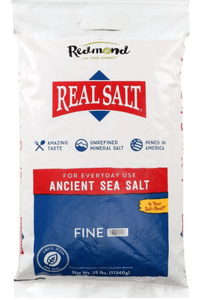
>>> Use coupon code MASTCELL360 to get 15% off!
If you want to try some minerals, I find that this mineral blend is generally well tolerated by those with mast cell issues.
Tea Strainer
I like to stick with loose leaf teas when I can find them.
For making tea with loose leaf tea, you’ll need a tea strainer.
Be sure to use one that’s all metal.
Some strainers are plastic. And some tea bags are woven with plastics to make them more durable.
But you don’t want to be steeping hormone disrupting chemicals from plastics into your tea!
Yuck!
This is my favorite tea strainer to use.

You could also use unbleached organic, cotton or paper tea bags like these.

Ready to take your tea to the next level?
Here’s the recipe.
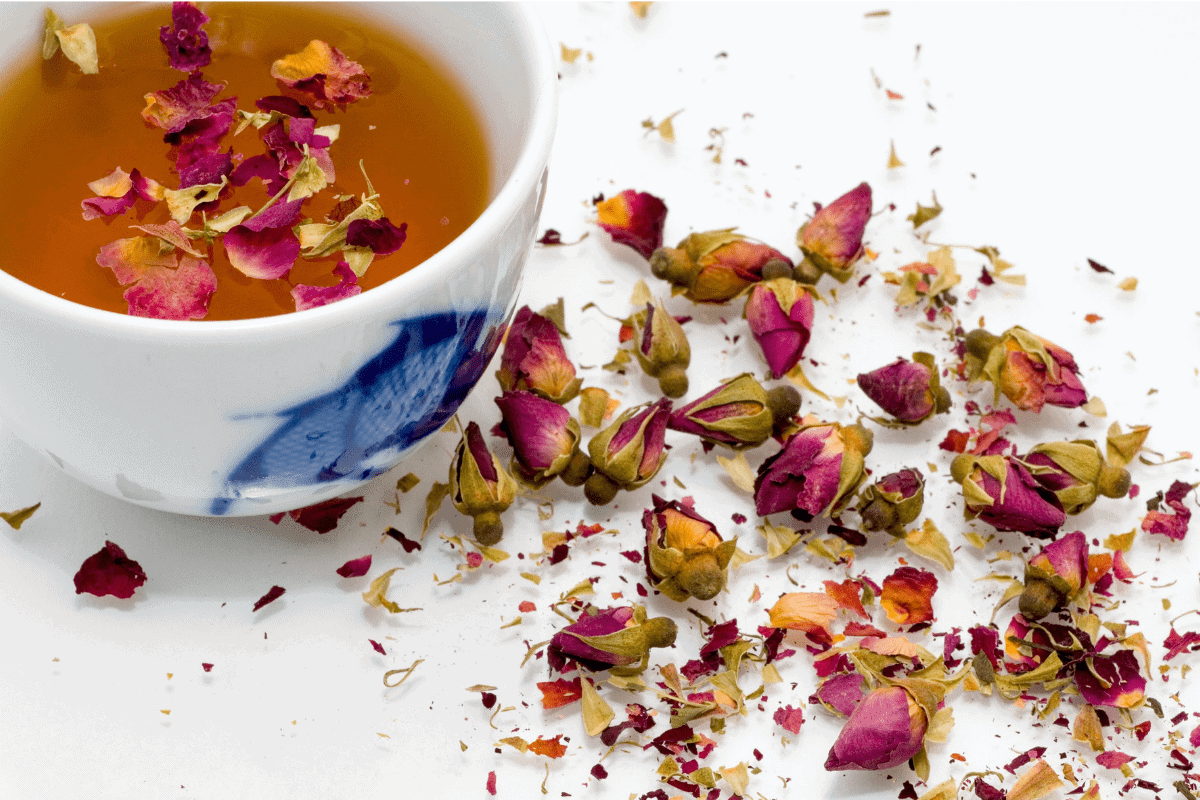
Low Histamine Tea
Equipment
- Mug
- Sharp Knife
Ingredients
- 1 teaspoon Kauai Farmacy Tulsi Tea
- 1 Organic Cardamom Pods
- ¼ inch Organic Fresh Ginger
- 1 teaspoon Organic Rose Petal Powder
- 12 ounces Filtered Water
- 1-2 teaspoons Native Forest Coconut Milk
- 2-6 drops Stevia
- ⅛ teaspoon Smart Monk 100% Pure Monk Fruit Powder
Instructions
- Bring filtered water to almost boiling, about 200-212 F.
- Break open the cardamom pod and separate the seeds from the husk.
- Cut the ginger into 4-5 pieces.
- Put the tulsi, cardamom seeds, and ginger in the tea strainer.
- Pour the hot water over the tulsi blend and steep for 5 minutes.
- Remove tea strainer and stir in the organic rose petal powder.
- Stir in 1-2 teaspoons of coconut milk and 2-6 drops of stevia, as desired.
- Take some deep breaths and enjoy the aroma of this calming tea. Sit quietly, and drink this slowly as a meditative practice.
Notes
Let me know if you try this low histamine tea, and what you think!
More Low Histamine Drinks
- Pumpkin Spice Drink – Low Lectin, Low Oxalate, Low FODMAP
- Elderflower Sparkling Wine Cocktail (plus Mocktail option) – Low FODMAP, Low Lectin, Low Oxalate
- Meat Broth – Low Lectin, Low Oxalate, Low FODMAP, Low Salicylate
- Mold Free Coffee – Low Lectin, Low Oxalate, Low FODMAP, Low Salicylate
- Iced Hibiscus Tea – Low Lectin, Low Oxalate
- Lower Histamine Wine Options
Some links in this website are affiliate links, which means Mast Cell 360 may make a very small commission if you purchase through the link. It never costs you any more to purchase through the links, and we try to find the best deals we can. We only recommend products that we love and use personally or use in the Mast Cell 360 practice. Any commissions help support the newsletter, website, and ongoing research so Mast Cell 360 can continue to offer you free tips, recipes, and info. Thank you for your support!
References
Sridevi, G, et al. (2009). Pharmacological basis for Antianaphylactic, Antihistaminic and mast cell stabilization activity of ocimum sanctum. The Internet Journal of Pharmacology, 7(1). https://doi.org/10.5580/bc4

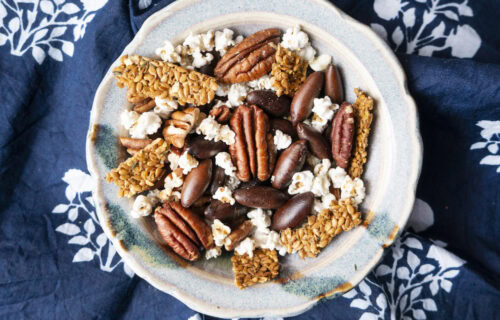

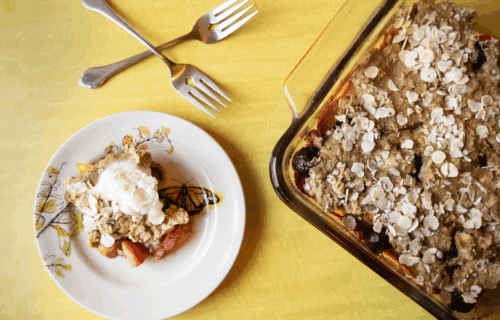
Just tried this tea for the first time and love it!
I tried it without the coconut milk or stevia as I prefer unsweetened teas and it was lovely 😊
Hi Michelle! So glad to hear you liked it!